The world of Buddha statues, with their many forms, styles, and poses have captivated devotees and academics for centuries. Far from being just pieces of art or decorations, they represent aspects of the Great Buddha’s core teachings, with each one telling a story pertaining to life, living, and enlightenment.
- The Protection Buddha (Mudra of Fearlessness)
- The Teaching Buddha (Vitarka Mudra)
- DharmaChakra Buddha - Spiritual Path
- The Medicine Buddha (Bhaisajyaguru)
- The Meditation Buddha (Dhyana Mudra)
- Bhumisparsha Mudra - The Earth Touching Buddha
- The Laughing Buddha (Budai)
- Calm Buddha - Develop Serenity
- Nirvana Buddha - The Reclining Buddha
- In Conclusion
For the discerning seeker everything pertaining to the Buddha has meaning, and at its very core, it nudges them towards the path of enlightenment, and keeps them steady on the path when faced with the many great adversities of life.
Even if you’re far from being a Buddhist monk, or a practitioner seeking Nirvana, these statues will inspire you to embody the qualities that the Buddha represents. Aside from this, they possess certain energies and can protect you from certain others, helping transform your home, family, or place of business into an oasis of Zen.
The Protection Buddha (Mudra of Fearlessness)
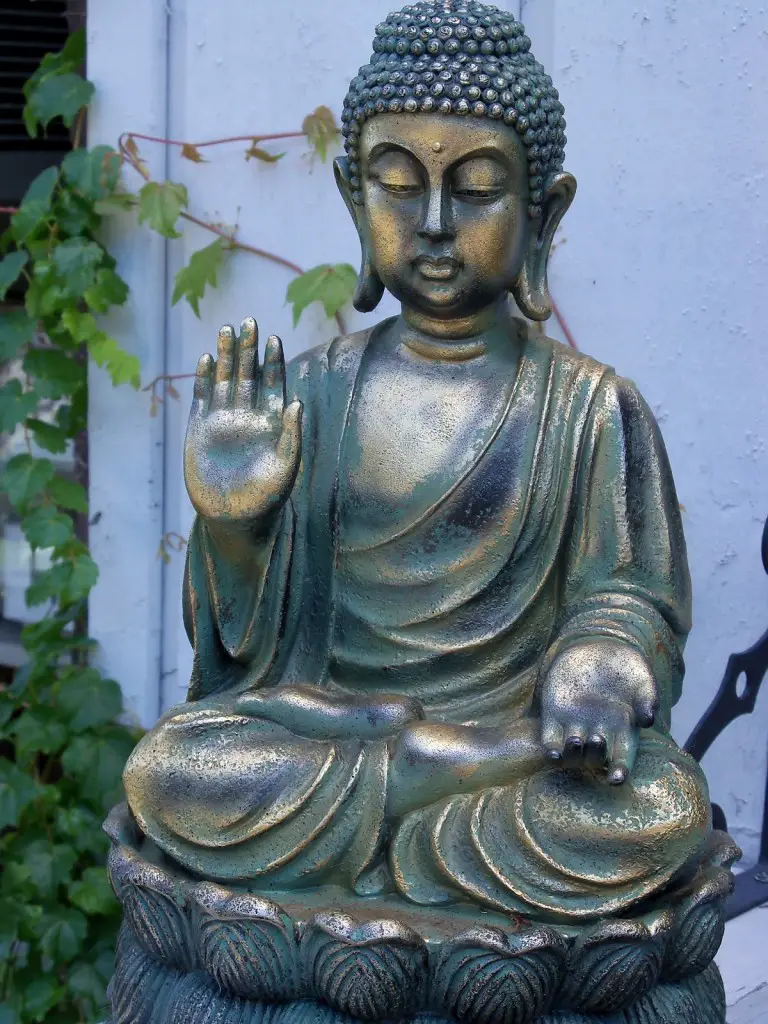
Picture this: a Buddha statue with its right hand raised, palm facing outward. This is the iconic gesture of protection, reassurance, and blessing. It’s a popular choice for It serves as a daily reminder that fear and negativity can be overcome with a calm mind and a fearless spirit.
This statue is a popular choice among those who seek to cultivate a safe and peaceful environment. Whether placed in a home, office, or a place of meditation, it attracts positive energy and fosters an atmosphere where one can find solace and strength.
It’s not just an object of art; it’s a source of power and protection, a symbol that stands tall against all sorts of negativities and obstacles.
The Teaching Buddha (Vitarka Mudra)
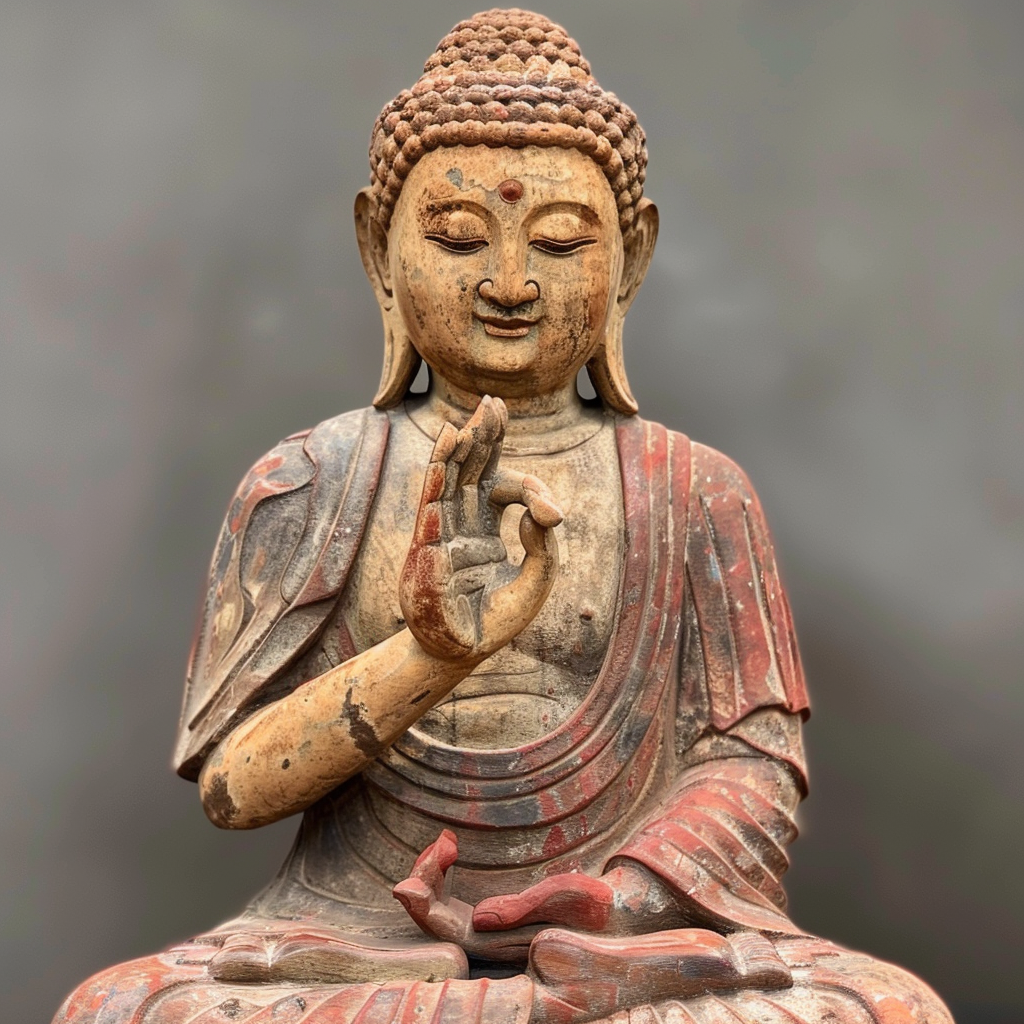
Have you ever seen these types of Buddha statues with the thumb and index finger forming a circle? That’s the one.
This gesture represents the transmission of Buddha’s teachings, with no beginning or end, just like the circle. It’s a nudge to keep seeking knowledge, to understand the truth of life, and to continue the cycle of learning and teaching. Perfect for lifelong learners and those passionate about sharing wisdom.
The Vitarka Mudra is particularly resonant for those who value wisdom and education. It symbolizes the idea that to teach is to learn twice, highlighting the reciprocal nature of knowledge.
Every time the teachings of the Buddha are shared, they gain new life, evolving and adapting to the context of the moment while retaining their profound essence. This statue stands as a testament to the power of education as a tool for transformation, both personal and collective.
DharmaChakra Buddha – Spiritual Path
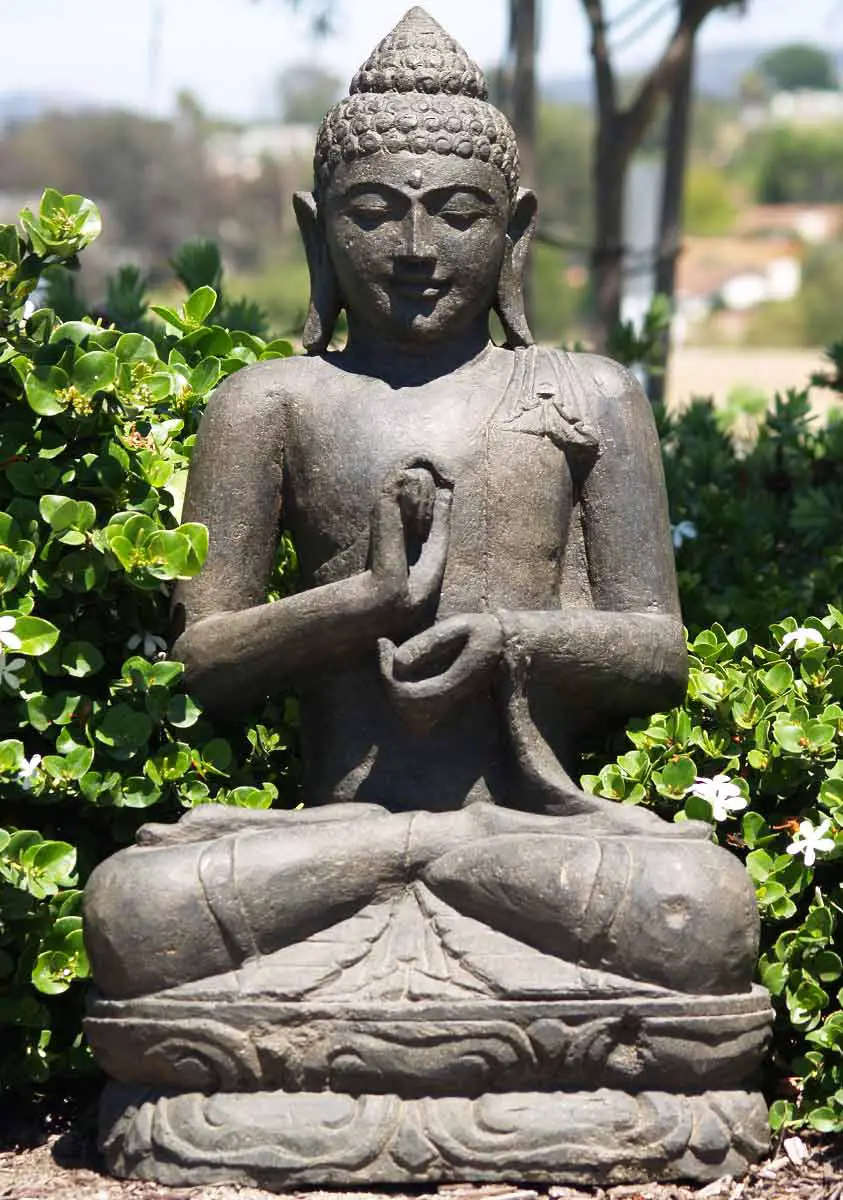
The DharmaChakra Buddha, symbolizing the Wheel of Dharma (DharmaChakra), represents one of the most pivotal moments in the Buddha’s life—his first teaching after attaining enlightenment, where he set the wheel of the dharma in motion.
This teaching, delivered in the Deer Park at Sarnath, is where the Buddha expounded the principles of the Four Noble Truths and the Eightfold Path, the core teachings that form the foundation of Buddhism.
The DharmaChakra Buddha is often depicted with hands held up in front of the chest, the thumbs and index fingers forming circles to mimic the turning of the wheel, while the other fingers remain extended.
This gesture, known as the Dharmachakra Mudra, symbolizes the continuous flow of energy and the Buddha’s role as a teacher of the dharma, inviting all beings to engage with these teachings to achieve enlightenment and liberation from suffering.
The Medicine Buddha (Bhaisajyaguru)
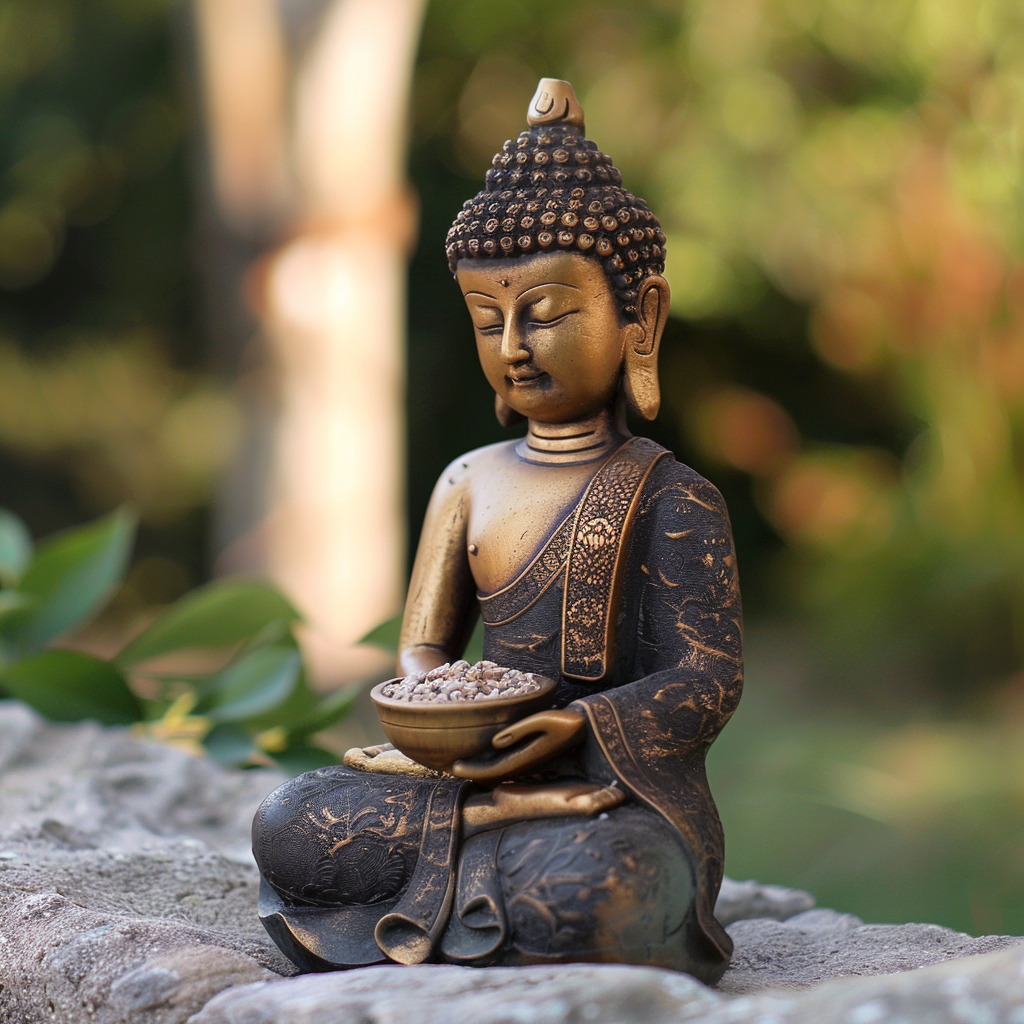
Often depicted holding a bowl of healing herbs or medicine, this Buddha is all about healing and well-being.
It’s like having a divine doctor in your corner, promoting physical and mental health, and healing. It’s a comforting presence for anyone seeking wellness or a reminder of the importance of taking care of oneself.
Envision this statue as more than just an object of reverence; think of it as the embodiment of a divine physician, one who understands the intricacies of human suffering and offers remedies not just for physical ailments but for spiritual and emotional wounds as well.
The presence of the Medicine Buddha in one’s space is akin to having a constant reminder of the interconnectedness of mind, body, and spirit, urging us to approach our health and well-being from a comprehensive perspective.
The Meditation Buddha (Dhyana Mudra)
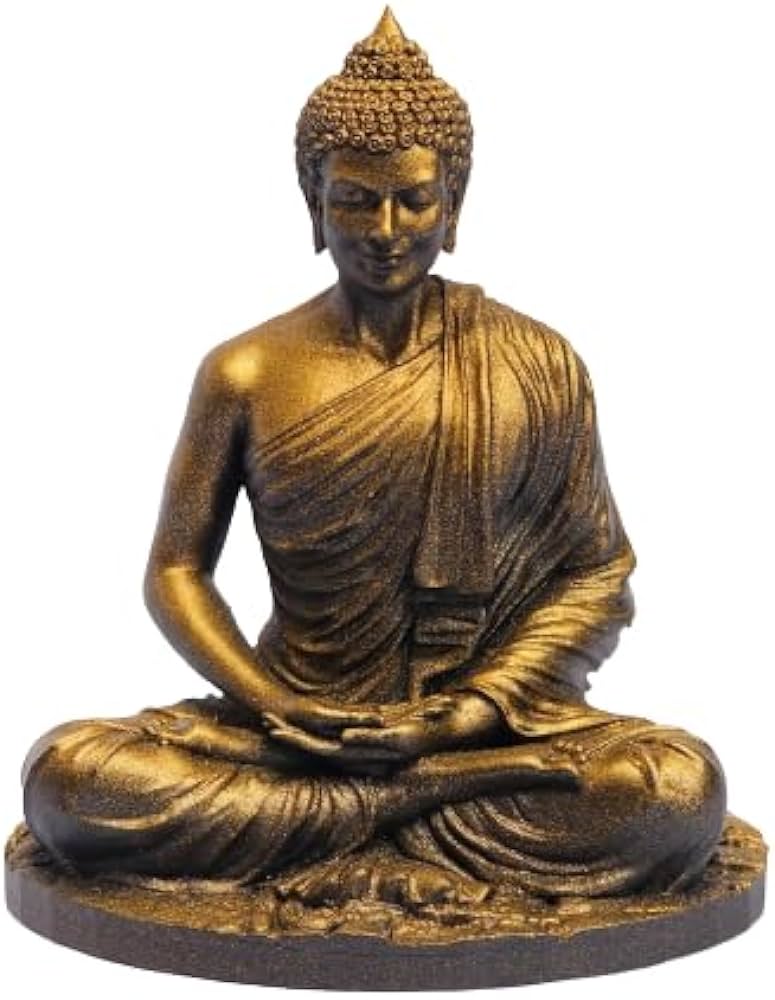
This one’s all about the zen life. The Buddha is seated in a lotus position, hands resting on his lap, eyes gently closed, and the face is a portrait of tranquility.
This statue symbolizes a perfect balance of thought, rest of the senses, and tranquility. It’s like a visual reminder to breathe deep, meditate, and find your inner peace amidst the chaos of daily life.
This statue embodies the very essence of meditation. It’s as if the Buddha himself is demonstrating the art of finding stillness within.
The lotus position is more than just a pose, it’s a symbol of purity and detachment from the muddiness of material concerns, much like the lotus flower that blooms unsoiled by the mud. The hands laid gently in the lap signify a state of deep meditation and spiritual enlightenment, where all desires and fears are transcended.
Bhumisparsha Mudra – The Earth Touching Buddha
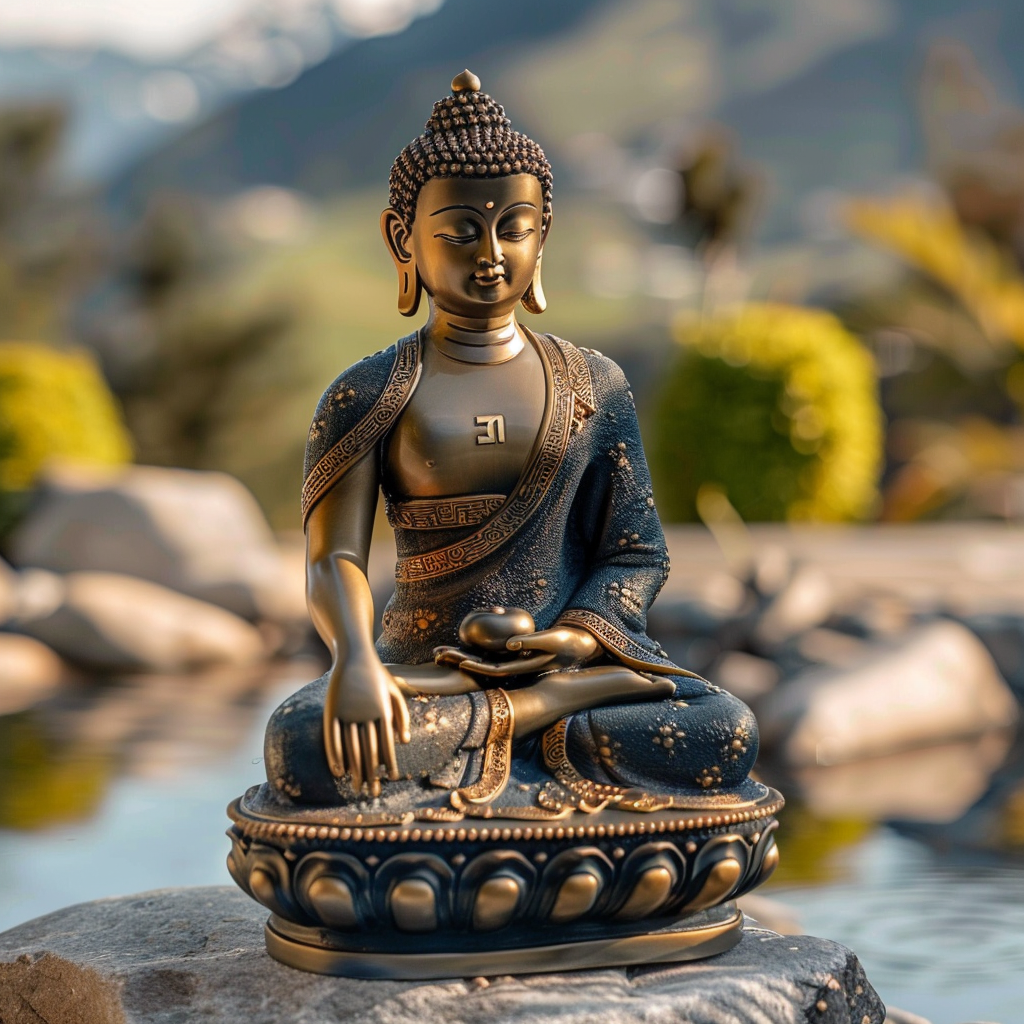
Here, the Buddha is seated with one hand reaching down to touch the earth, calling it to witness his enlightenment. It’s a powerful image that symbolizes unshakable faith and determination. It’s like Buddha’s dropping the mic, saying, “This is my moment of truth.” Great for those looking for some inspiration to stay grounded and persevere through tough times.
Imagine this statue as a silent yet immensely powerful companion in times of challenge. Its presence serves as a reminder that perseverance, grounded in a deep sense of purpose and self-belief, can guide us through life’s toughest trials.
The Earth itself, called upon as a witness in this mudra, points out a connection to something greater than ourselves, reinforcing the idea that we are not alone in our struggles. It’s a visual representation of the fact that true strength comes from within and that grounding ourselves in our truth can lead to monumental breakthroughs.
The Laughing Buddha (Budai)
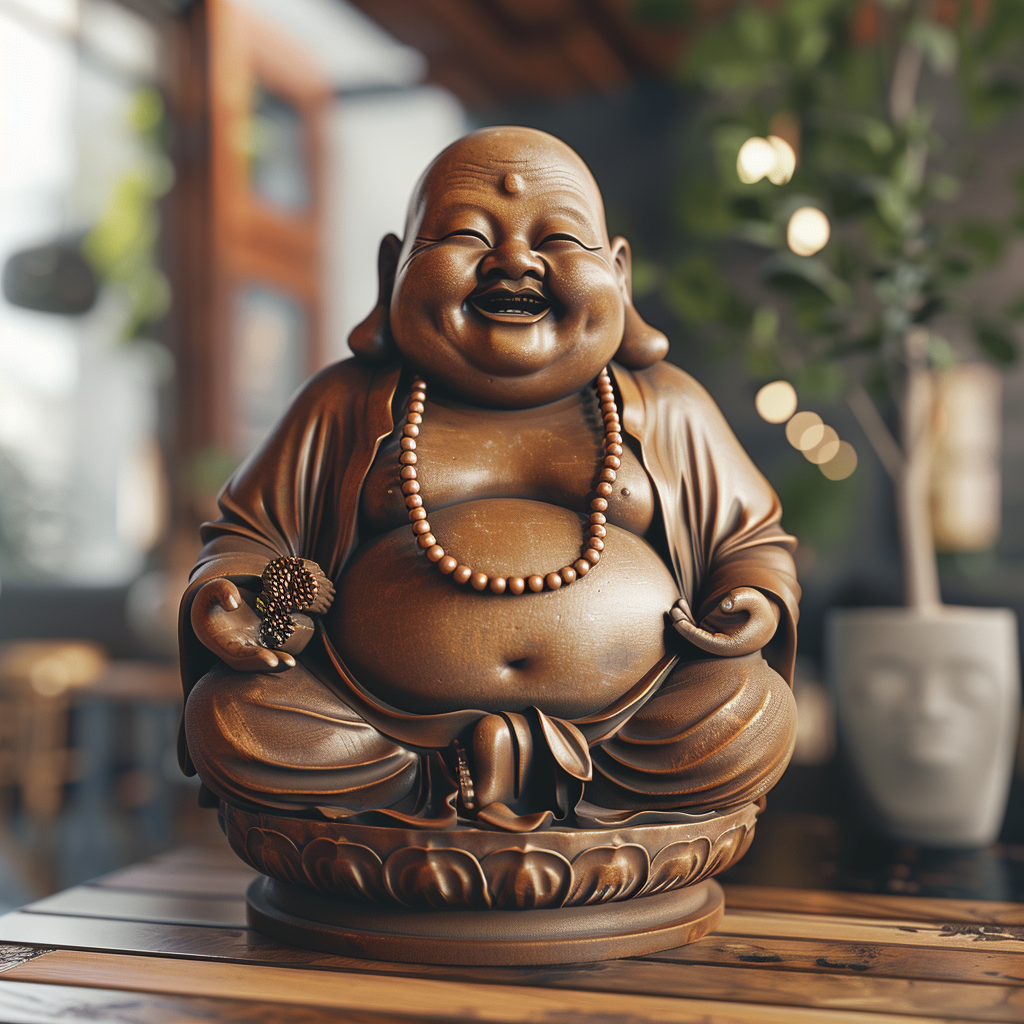
A bit different from the rest, this jolly figure with a big belly and a wide smile is actually a later addition to Chinese folklore, often mistaken for Gautama Buddha. The Laughing Buddha stands as an emblem of joy, wealth, and satisfaction.
It’s believed that stroking his belly can attract fortune and success. Imagine him as a jovial companion, nudging you to cherish and find delight in the small, everyday pleasures of life.
Budai’s image is a powerful emblem of contentment and benevolence. His wide smile and open posture are invitations to let go of our worries and embrace the abundance of life with gratitude and joy.
These types of Laughing Buddha statues are a testament to the idea that happiness is not a destination but a way of traveling through life, reminding us to appreciate the beauty of the present moment, to cherish simple pleasures, and to share our joy with others.
The presence of the Laughing Buddha in homes and businesses is not just a wish for prosperity but a daily encouragement to maintain a positive outlook, spread happiness, and cultivate an environment where contentment and generosity flourish.
It’s a reminder that wealth is not only measured in material possessions but in the richness of our spirits and the joy we find in life’s little moments.
Calm Buddha – Develop Serenity
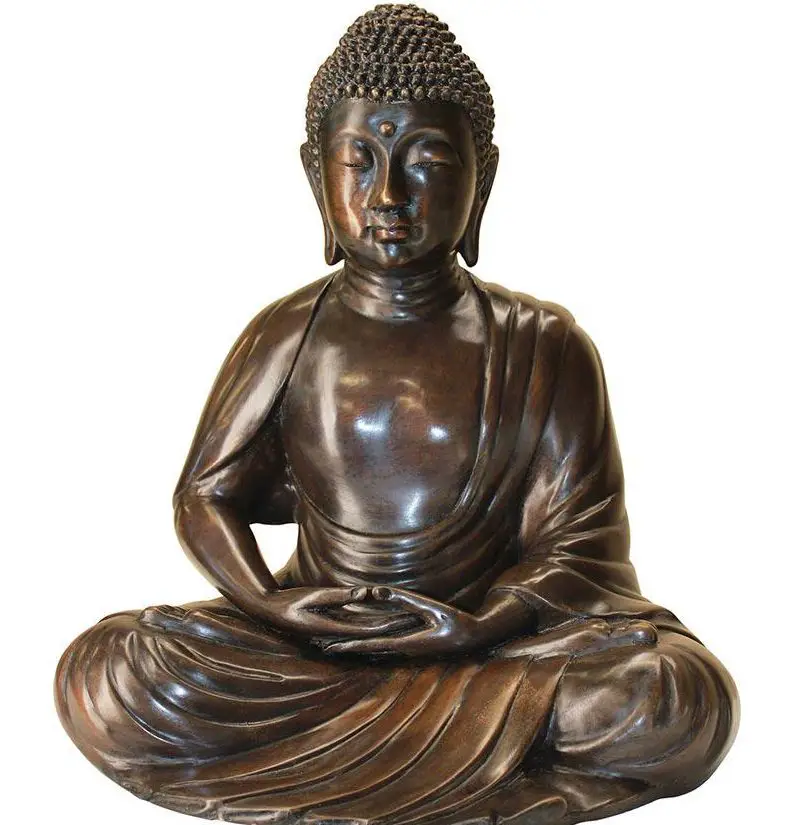
The Calm Buddha, often depicted in a serene state of meditation, embodies the essence of tranquility and inner peace.
This image, with the Buddha seated in a lotus position, eyes gently closed, and a soft smile on his lips serves as a powerful symbol of the potential for calmness and clarity within us all.
The posture, typically in the Dhyana Mudra with hands resting in the lap, symbolizes the perfect harmony of thought, a state where the mind is at peace, free from the tumult of the external world.
The Calm Buddha invites onlookers into a moment of reflection, encouraging the quietude of mind that is essential for deep meditation and insight. It’s a visual representation of the Buddha’s teachings on mindfulness and the path to enlightenment, emphasizing the importance of inner peace in achieving spiritual awakening.
Nirvana Buddha – The Reclining Buddha
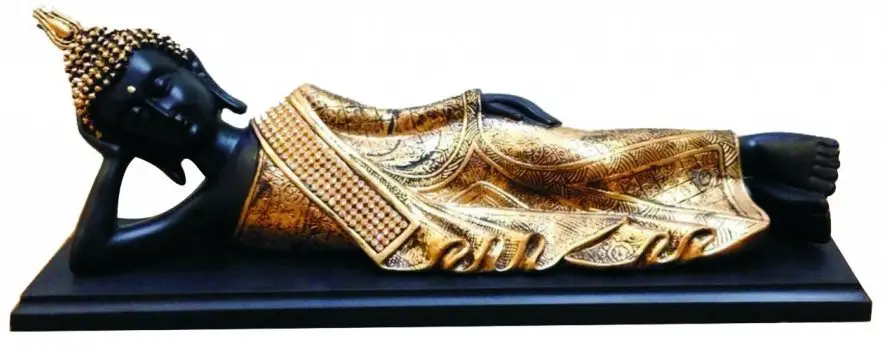
The Reclining Buddha or Nirvana Buddha is a deeply symbolic representation in Buddhist art, depicting the Buddha lying down on his right side, head resting on his right hand or a cushion, with his legs often slightly overlapping.
This pose is not merely a casual or restful stance but signifies the Buddha’s final moments before entering Parinirvana, the ultimate state of enlightenment and release from the cycle of birth and rebirth.
Unlike the depictions of the Buddha in meditation or teaching, the Reclining Buddha conveys a sense of finality and serenity, marking the completion of the Buddha’s earthly journey and his transition into Nirvana.
Visually, the Reclining Buddha is often depicted in a state of sublime tranquility, with a smile that suggests the Buddha’s awareness and contentment with his impending nirvana.
This imagery is a powerful tool for meditation, allowing devotees and onlookers alike to engage in deep contemplation about the meaning of life, death, and what lies beyond. It serves as a reminder to embrace each moment with mindfulness and to live a life that leads towards spiritual awakening.
In Conclusion
These different types of Buddha statues are not just for Buddhists. They’ve crossed over into all sorts of spaces, appreciated by people from various backgrounds for their artistry, the sense of peace they bring, and the universal principles they embody. It’s like they’ve got this universal appeal, resonating with anyone looking for a dash of tranquility, a pinch of wisdom, or a reminder of the beauty of life’s journey.
In essence, Buddha statues are more than just statues. They’re beacons of peace, symbols of profound life lessons, and reminders of the potential for enlightenment that lies within us all. Whether you’re deep into your spiritual journey or just love the vibe they bring to a room, there’s no denying the powerful presence and significance these figures hold.
Each of these different types of Buddha statues carries its own vibe and message, making them not just decorative pieces, but powerful symbols that inspire and influence our daily lives. Whether you’re into meditation, seeking knowledge, need a dash of protection, or just a good laugh, there’s a Buddha statue that resonates with every journey.
- The Namagiri Thayar Mantra – For Wisdom, Creativity & Prosperity - April 29, 2024
- Krishnashtakam – “Krishnam Vande Jagadgurum” – Lyrics & Meaning - April 4, 2024
- Karadarshanam – “Karagre Vasate Lakshmi” – Meaning & Benefits - March 26, 2024

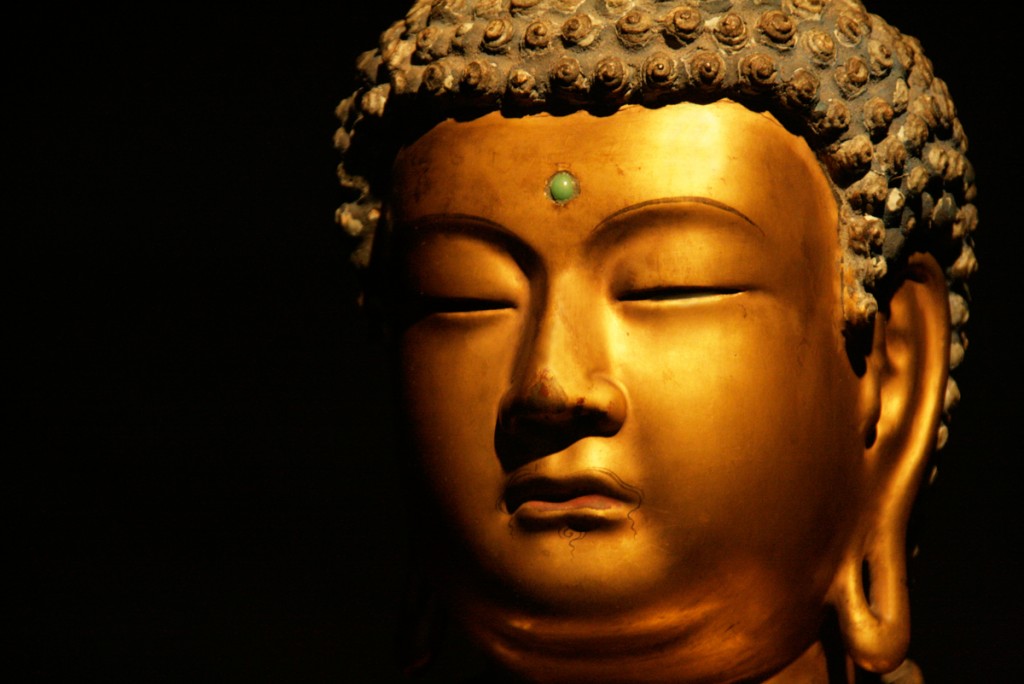
Excellent website. Plenty of helpful info here.
I’m sending it to several buddies ans also sharing in delicious.
And certainly, thanks for your sweat!
You should be a part of a contest for one of the
finest websites online. I will recommend this website!
If you want to improve your knowledge just keep visiting this web
page and be updated with the latest information posted here.
What if the Buddha has a stick with a sack off of it and another symbol in his other hand please